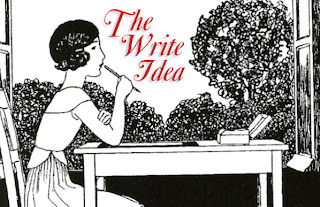When I was fifteen I knew a girl who had plague.
"Her head ached violently, as though a tight steel band had been bound about her temples and was drawing steadily tighter. She was sweating and there were stabbing pains throughout her stomach and along her legs and arms. Her throat was as dry as if she had swallowed dust . . . All at once she gave a convulsive shudder and the retching started again. By morning she lay flat on her back, her eyes fixed and wide open but unseeing. There were dirty green circles beneath her eyes and the lower part of her face was shiny with the bile and saliva which had dried there."—Kathleen Winsor
The year was 1644 and it was the first time I visited London. Every detail of life in that period—food, fashions, architecture, interior design and politics—was covered in the fictional tale called Forever Amber. Kathleen Winsor made the time of my great-greats vivid and authentic through years of research, before publishing her best-seller in 1944.
In high school I met Katherine Swynford, great-grandmother of kings. She lived at Kettlethorpe, a small manor in Lincolnshire, England very close to some of my own greats. Born in about 1358, Katherine had a love affair with John of Gaunt, and later married him. Their descendants became England's royal line. Anya Seton wrote this about her research for Katherine:
"In telling this story I use nothing but historical fact when these facts are known—and a great deal is known about the fourteenth century in England. I have tried never to distort time, or place or character to suit my convenience."
Anya Seton also introduced me to Elizabeth, The Winthrop Woman. Just like my 10th great-grandmother, Elizabeth was born in England, and moved to the New World in 1631 with Governor John Winthrop of the Massachusetts Bay Colony. Though told as a novel, her story is authentic history. She has thousands of descendants today. So does Sarah Colby, and I'm one of them.
Taking some cues from historical novelists, here are ten suggestions I have for finding the story in your history.
- Identify the time period and places your ancestor lived.
- Check Wikipedia or Google, and list historical events that happened then and there.
- List prominent people of the time period, since their lives are probably documented.
- Go to the library for history books to look up events and people on your lists. Check the children's section, too.
- Make a timeline of your ancestor's life, and plug in the information you've discovered.
- Check census records, court documents, vital statistics registers. The LDS Family History Library, local archives, local museum curators, and the Internet are some good sources. Read local histories, old newspapers, etc. looking for a mention of your guy. You want to find out if he owned property, the number of marriages and children, his age at pivotal times of life, his level of education, if he was involved in lawsuits, whether he held public office or attended a church, who lived with him, where he fit in his family, his service record, etc.
- Outline a story with your facts. For instance: He was a younger son (who wouldn't inherit,) Catholic, a widowed father of five, educated, lived in Ireland during the potato famine, was sued for assault, received a pension for war injuries. Add in the local flood, his father-in-law's murder, his illegitimate son—he sounds intriguing.
- What was happening on the economic, political and religious scene at the time? Using a vintage map, pinpoint how close he was to the action. How do you think these events influenced his actions?
- Google fashion, architecture, art, music, food, laws, etc. of the time period. Determine how these details fit in.
- Now—sit down with your new best friend and write his story. You'll be surprised at the understanding, insight and connection you feel. After all, his story is your history.
*Homework:
~How did your forefather treat your foremother? What was marriage like in that time and place? Google it, then write a letter about your marriage as if you were your ancestor.






Fabulous tips. I appreciate you passing on your experience and wisdom in this research/storytelling arena. You make it all seem feasible instead of overwhelming. One step at a time, I guess.
ReplyDelete(We read all the same books!)
thanks for introducing me to those great books. they were great historical novels.
ReplyDeleteLove these tips!!!! I'm saving them?
ReplyDelete